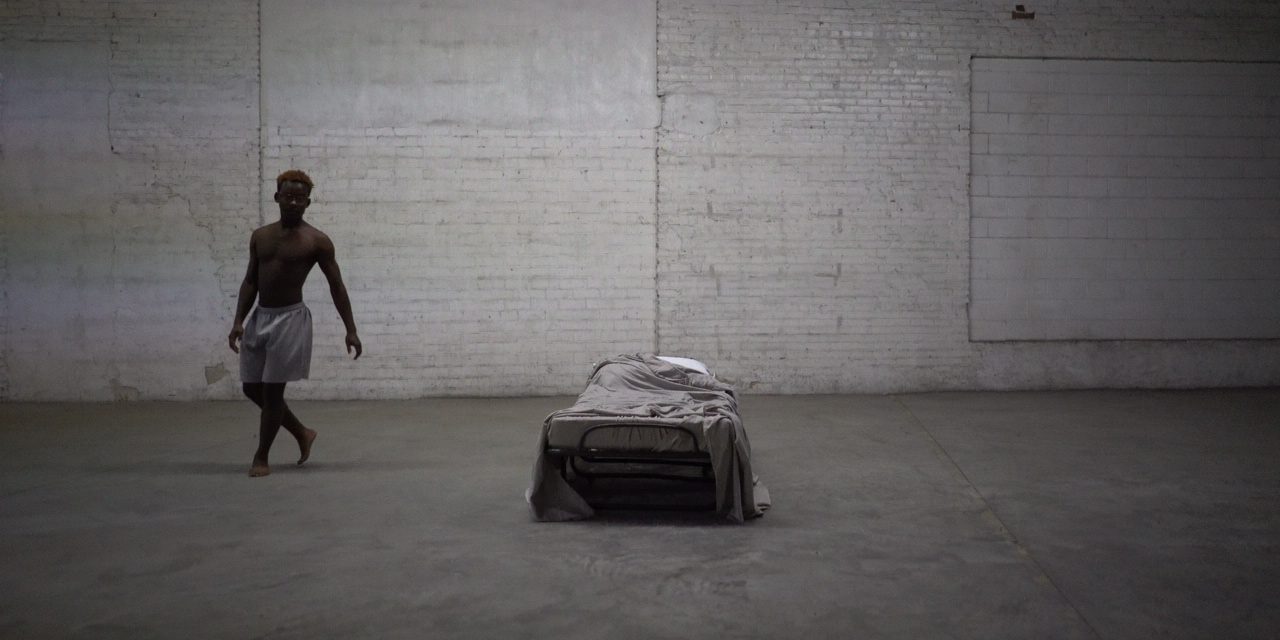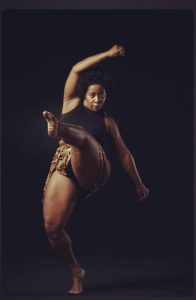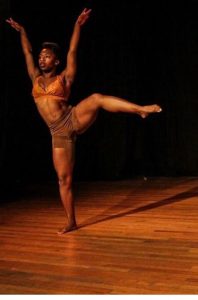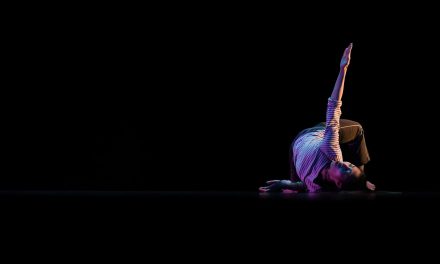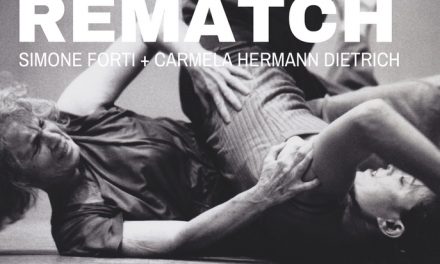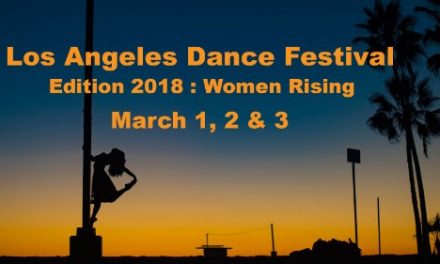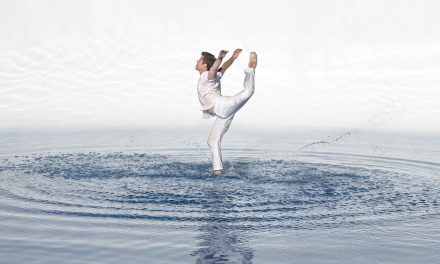There is a dance company in Long Beach with a strong and weighty message to deliver. Although this is a primarily Black company, its letter to the world is addressed to all races, genders and social statuses. Founded in 2014, The CRayProject is under the direction of Artistic Direct Chatiera Ray and Assistant Artistic Director LaRonica Southerland. These are two women who moved here from Ohio and who have a clear idea of where they are headed, what they have to say, who their audiences are and why they are working so hard to achieve their goals.
This past week end, The CRayProject presented its very first full evening of works as part of The Studio Collaborative at the Long Beach Playhouse. Prior to this, the company had presented works on dance festivals and shared evenings with other choreographers and companies. I first noticed their potential when they appeared at Highways Performance Space in Santa Monica on a showcase curated by dancer and choreographer James MahKween.
I attended the Friday, January 18th performance and like so many young and struggling companies, they were running late. The audience, however, did not seem concerned or troubled and when the doors opened into the intimate studio theater, they entered with obvious enthusiasm. The Studio Theater is very small, but it was a huge opportunity for the company.
The program was divided into two acts, each one with a clear gender and racial focus. Act I, Looking Upon Venus, was presented in six short works that examined the lives of and celebrated Black women. Although each piece had a strong message, Act I suffered from a lack of cohesive transitions; leaving the audience sitting for several minutes in a darkened theater wondering if something had gone awry. This was not true of Act II which, although it consisted of five separate pieces, felt like one complete and continuous story.
The works in Act I made clear the strengths and challenges that Black women face. What Was Lost, performed wonderfully by Ray and Southerland dressed in all white, demonstrated the constant barriers that society put before Black women who must overcome and seek out their own identities in order to excel. The single handheld flashlight was a nice metaphor for that search.
A powerful God Is A Woman finds two young women and their mother using a strong faith and resilience to overcome life’s hardships. The music by LaShun Pace Rhodes took us into the realm of the Black church, something I experienced growing up in the south. The dancers who gave this piece its power were Keilah Glover, Ray and Southerland.
Crowned, choreographed and performed by Ray and Southerland was a choreopoem performed to a poem read from offstage that focused on the Black women and the stereotypes put upon them by society. It was well performed by both women and demonstrated that a larger stage was needed for these two beautiful movers.
During a brief pause from the dancing we were treated to a recorded childhood memory of Ray’s titled Bad Hair Day. She describes a childhood experience where her mother painfully straightens her hair prior to sending her off to school. The audio was somewhat muffled, but I was able to grasp the essence of it. During recess, it began to rain and, in an attempt to fit in with her classmates, Ray took off her hat that was protecting her hair. The rain, of course, caused her straightened hair to explode into a very large Afro, destroying all her mother’s hard and timely work. By the verbal reactions, the women in the audience clearly related.
Nap.Scalp. Skat was a light piece that poked fun at the trouble and criticism Black women go through with and about their hair. Performed to Ella Fitzgerald’s One Night Samba, three women carrying large paintings with varies depictions of Black woman, shuffled about the stage as Southerland performed a solo that moved beautifully onto and off the floor. Skat is a type of singing made famous by Fitzgerald, but it is also the name of a German card game. This might explain the shuffling of the paintings onstage. Although it was great to hear Fitzgerald’s skat singing, this piece did not hit its attended mark.
Southerland choreographed and performed the next dance that showcased her talents as a modern dancer and beautiful mover. The program notes stated that Euphoria was an “exploration of being sexually liberated and comfortable in your skin.” I saw this, but much of the material that Southerland used evoked the demeaning way in which women’s bodies are so often sexually exploited. It was a strong work, but I am not certain that Southerland understood the full meaning of the images she evoked.
Dear Sara, choreographed by Ray and the dancers, was another choreopoem that fused together contemporary and African dance. The text of the poem described and celebrated the Black female anatomy, and the power and strength of that culture’s women. It was a nice closer to Act I and what stuck in my memory was the line, “We are the heartbeat of the drum!” It was a statement that brought brought about loud “amens” from women in the audience and clearly referred to the entirety of the first act. The lights faded to dark as Southerland placed her hand on the face of a young man who quietly walked onstage. He was the only male to appear up to that point.
Act II, titled Black Phoenix, opened with the last image of Act I, Southerland gently caressing her male friend’s cheek. From an earlier interview with Southerland, I gleamed that this young man represented her brother. It was a beautiful transition into the second act with its all-male cast. The five sections examined the struggles of Black men in America; reaching out to God for guidance, and how, although men appear to carry most of the responsibilities, it is the women in their lives who support and move them forward. There was a very emotional exploration into the results of physical and sexual abuse within families, Black men seeking to regain their heritage and a leading role in society, and finally a look at the wreckage caused by this country’s organized incarceration or modern-day slavery.
One of the highlights of Act II was Simply Beautiful, choreographed by James MahKween and performed with great conviction and strength by Juquari Baskin. It is a dance about a young man, broken in spirit, seeking guidance from God. Baskin demonstrated a control of his technique that was admirable and MahKween’s choreography created the vehicle for the young man to shine. My one criticism for MahKween was the work was occasionally weakened by inserting unnecessary dance tricks. Yes, they made Baskin shine as a dancer, and the audience applauled his efforts, but the sudden leaping splits and handstands did little to strengthen an otherwise powerful work.
Choreographed by Ray, Brotherly love came across as a rambling piece comprised of brief solos that sporadically appeared and disappeared. Performed very nicely by Tirek Johnson, Deonte Newell, and Daveione Williams, it tried unsuccessfully to clearly express the power of male camaraderie.
The choreography and vocals for Pray For Me were by Ray. Performed powerfully by James MahKween and Deonte Newell, this duet sought to portray how prayer helps certain people cope with life’s demands and burdens. Unfortunately, it concluded before making a clear statement. The meaning was all in the program notes, not on the stage.
The difficult subject of physical and sexual abuse within families, however, was beautifully and sensitively handled in Ray’s work titled Bully, and she accomplished it without any display of violence or sexual activity. The entire dance transpired on and around a bed, but incorporated movement that spoke distinctly to internal fear, compassion and love.
A622365 was a very well-crafted dance that examined how men of color who, once caught up in the prison system, have little or no chance of ever leading a productive and fulfilling life. It pointed to the fact that a crippling imprisonment can also reside within one’s own mind. The performances by James MahKween and Daveione Williams were moving, with special mention to Daveione Williams and James MahKween. The work was, however, accompanied with a very uneven vocal performance by singer Kendrick Clevor. In his defense, Clevor was straining to compete with recorded music whose volume was set way too high for the Studio Theatre space.
The CRayProject has a way to go before reaching a strong professional level, especially on the production end, but the seeds have been planted. These seeds appear to be ones that just might produce a budding and healthy company. The CRayProject’s focus is on everything Black, but its message is one that we all should heed.
The CRayProject can found at their Facebook page, click here.
For more information on The Long Beach Playhouse, click here.
Featured image: The CRayProject Juquari Baskin – Photo by Jaron Crawley

